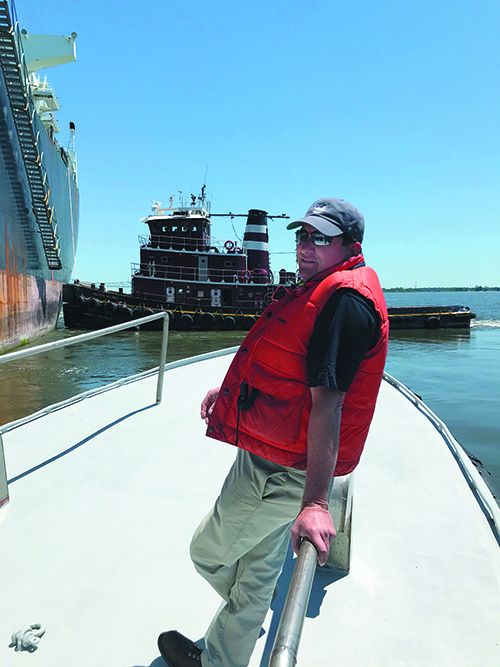
Ted Parish is an experienced coastal and offshore sailor with a very legitimate argument in favor of foam, inherently buoyant, life jackets. His day job involves safely piloting merchant ships up and down the tight confines of the Delaware Bay.
He’s a senior bay pilot who understands the risks involved in climbing from the pilot boat’s deck, just a few feet above sea level, to the rail of a merchant ship that may be 30 feet or more above its waterline. It takes a strong grip and a good sense of balance to negotiate the rope ladder. Add the swell from a nor’easter, ice on the deck and darkness, and one misstep can lead to an overboard incident.
From Ted’s perspective, an inflatable lifejacket’s inflation lag, often up to 10 seconds or more, is viewed as unacceptable among many mariners. Parish favors instantaneous, floatation that’s available 100 percent of the time. A delayed or even complete auto-inflation failure may be acceptable to those sailing in warmer water. There is a manual tab to pull and if that also fails, an oral inflation tube offers a last resort. However, in colder Chesapeake Bay winter water, or in mid summer conditions in Maine, Nova Scotia or the Pacific Northwest, a person in the water will be more likely to experience laryngeal spasms and have a hard time breathing let alone be able to orally inflate a PFD.
Sailors are starting to wonder how often the auto-inflation feature on inflatable life jackets fail? The industry doesn’t have an answer. But moderators of US Sailing Safety at Sea Seminars have for several years been informally, and now more formally, tracking these numbers.
It’s done by monitoring participants in their “hands-on” training program. Students jump into the pool, wearing their own inflatable PFD. At almost every session some fail to function properly. It’s a small number and the trend is around two or three per session. This is why we at PS recommend treating the device like a manual inflation PFD and advise users to immediately reach for the yellow tab and pull. If the auto-inflator beats you to the pull, that’s great. If not, your tug will initiate inflation.
Feedback from seminars also indicates that there are incidents when a double failure occurs and even a tug on the yellow tab does not result in inflation. These are often linked to poor maintenance and even owner failure to replace an empty CO2 cylinder. The oral inflation tube does offer a third way to attain some buoyancy. But when a victim is in extremis, traumatized by having fallen overboard, contacting cold water and wearing a life jacket with no floatation, the effort to orally inflate the life jacket is like singing as you sprint to the finish line of a 10-kilometer foot race.
Think of it this way. Those headed to a safety seminar are more likely to have checked out their inflatables and made sure that they are in good operational order (see Inside PS blog “Inflatable PFD Care and Use”). That said, there have been reports of a 2- to 4- percent failure rate, and it’s likely that it would be higher in random sampling in the field.
The reason we still support the inflatable idea is that they are comfortable to wear and even more importantly, when combined with a harness, tether and jackline system there’s a whole other level of safety added to the mix.
Consider a situation in which a vessel and crew are in an emergency, when the boat is being driven onto a surf-swept lee shore and the skipper decides that it’s time to abandon ship. In such a situation we recommend careful thought be given to donning a Type 1 USCG or SOLAS approved life jacket, and if time permits adding the wet suit and surf fins mentioned in the adjacent article. Safety lies in the transit through the surf zone—a survival route understood by the makers of old cork life jackets, but a pathway that’s apparently not part of the design capability of all inflatable life jackets.































